The Dragon King, or Longwang in Chinese, is a significant figure in Chinese mythology and folklore. This legendary creature is believed to have control over the rain, rivers, and oceans, making him a crucial deity in Chinese culture.
what is the dragon king in china?
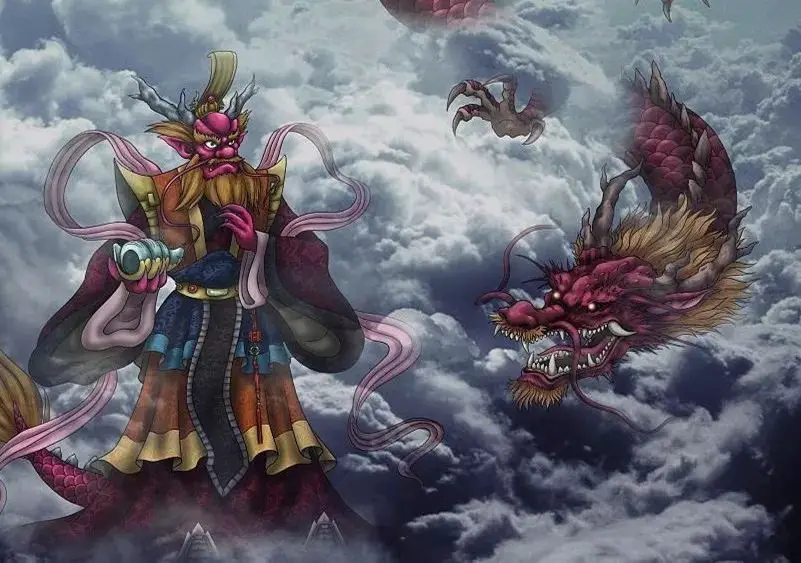
The Dragon King is a legendary entity in Chinese mythology that is said to have dominion over the watery elements of the sea. In China, he represents the ideals of strength, knowledge, and success.
In China, there are several “Dragon Kings,” each with their own territory under their control. Of them, the Four Dragon Kings are the most well-known because they are the de facto rulers of the East Sea, South Sea, West Sea, and North Sea, respectively. Several sorts of sea creatures and spirits are considered to inhabit each of these four seas, which are thought to represent the four cardinal directions.
The Four Seas’ Dragon Kings each have their own distinct appearance and personality. It is stated that the South Sea Dragon King is the strongest and most ferocious of the four kings of dragons, while the East Sea Dragon King is the wisest. Both the West Sea Dragon King and the North Sea Dragon King have their own mythologies, with the former being portrayed as a carefree and prankster while the latter is portrayed as a wise and powerful king.
Art and literature from China frequently feature the Dragon King, who is typically portrayed as a knowledgeable and kind monarch. Pearls are a common accessory for the Dragon King in Chinese art, because they represent both his majesty and his intelligence.
There are numerous Dragon King temples spread all across China. It is thought that those who worship at these temples will be blessed with good fortune and financial success if they are built near bodies of water. The Dragon King Temple in Beijing and the Dragon King Temple in Guangzhou are two of the most well-known locations dedicated to the mythical creature.
dragon king history
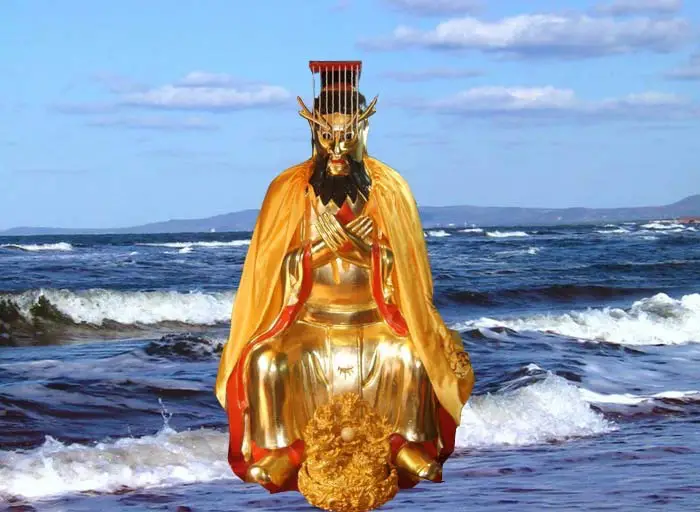
When and how the tale of the Dragon King first began spreading throughout China is unknown. A beloved mythical creature in Chinese culture, the dragon is thought to have inspired the concept of the Dragon King.
Water and rain were thought to be under the Dragon King’s direct control at first. The Dragon King’s sphere of power grew through time to cover the world’s oceans and rivers. Many thought he was an all-powerful king who could stop the ocean from flooding and provide rain to parched areas.
Others believe that the Four Dragon Kings, who sit above the oceans East, South, West, and North, first appeared during the Han dynasty (206 BCE-220 CE). They believed that the four oceans reflected the four cardinal directions and housed a variety of aquatic life and supernatural beings.
More and more temples were dedicated to the Dragon King during the Tang Dynasty (618-907 CE), when his veneration was at its height. Protection from floods and other natural calamities were added to the Dragon King’s expanding sphere of power, and he ultimately became an icon of safety and success.
The Dragon King maintained his status as a pivotal figure in Chinese mythology and culture over the centuries. Art, literature, and architecture all lauded him for being a metaphor for power, wisdom, and prosperity. The Dragon King was honored through the construction of temples all around China, many of which still stand today.
how many dragon king in china(dragon kings of the four seas)
The Four Dragon Kings are the most well-known of the many Dragon Kings in Chinese mythology. They are said to rule over the East Sea, South Sea, West Sea, and North Sea, in that order.
In Chinese mythology, Ao Guang represents the East Sea Dragon King, who is thought to be the eldest and wisest of the Four Dragon Kings. His palace is rumored to be buried in the mud at the bottom of the East China Sea, and he is a big fan of the arts.
Ao Qin, or the King of the South Sea Dragons, is renowned for his might and savagery. His palace lies at the bottom of the South China Sea, and he is depicted as a strong warrior in many works of Chinese literature and art.
Ao Ran, or the West Sea Dragon King, is typically depicted in media as being naughty and playful. His palace is claimed to be buried beneath the West China Sea, and he is known for his love of practical jokes.
Ao Shun, or the North Sea Dragon King, is portrayed as a knowledgeable and powerful monarch who safeguards his followers. A good and fair monarch, he is frequently portrayed in Chinese art and literature and has a palace beneath the Bohai Sea.
Although the Four Dragon Kings get all the attention, there are really many other Dragon Kings in Chinese mythology, each with authority over a different body of water. They range from the Yellow River Dragon King to the Yangtze River Dragon King to the Pearl River Dragon King and beyond.
Honoring the Dragon King is fundamental to Chinese religion and culture. There are several Dragon King temples spread out around China, and many of them are situated on or near water. It is widely held in China that visiting one of these temples will bring about material and spiritual success, hence they remain an integral part of daily life.
Where do the dragon Kings live?
The Dragon Kings are thought to have opulent palaces in the depths of the ocean, according to Chinese legend.
Legend has it that the East China Sea is home to the East Sea Dragon King’s opulent palace. The palace is rumored to be constructed entirely of priceless diamonds and treasures and to feature exquisite furnishings and works of art. In addition, the East Sea Dragon King is known to like music and dancing, therefore it is said that his castle is always full of these activities.
It is said that the South Sea Dragon King has his majestic palace located somewhere in the depths of the South China Sea. Some say the palace is crafted from precious corals and pearls and is adorned with works of art. It is stated that vicious marine monsters protect the palace of the South Sea Dragon King, an indication of the Dragon King’s strength and fury.
Reportedly, the West Sea Dragon King has a magnificent palace buried somewhere in the West China Sea. Stories say that the castle is full of naughty and playful ghosts and is decked with vivid colors and intricate patterns. Many strange sea species, it is believed, call the West Sea Dragon King’s castle home. This is just one more way in which the Dragon King’s passion for variety and individuality shines through.
There is lore that the North Sea Dragon King has a splendid palace hidden in the depths of the Bohai Sea. As legend has it, the palace is adorned with priceless artwork and defended by formidable marine animals. It is stated that the palace of the North Sea Dragon King is a place of justice and fairness, which is appropriate given the Dragon King’s position as a defender of his subjects.
what is dragon king powers

The Dragon King has the capacity to manipulate the elements as one of his many superpowers. It is widely held that the Dragon King, as the de facto monarch of the waters, has sway over the weather patterns that cause precipitation and storms at sea. He is rumored to have the power to call down storms and rain whenever necessary and to still the seas whenever they grow unruly.
The capacity to shield his subjects from harm is another one of the Dragon King’s many strengths. The Dragon King is typically portrayed as a fair and powerful king who will utilize his authority to defend his people. Legend has it that he can use his own formidable abilities and those of marine animals he calls to combat to vanquish his foes.
The Dragon King is not only able to manipulate the weather and defend his followers, but also the flow of rivers and other bodies of water. He supposedly has the power to alter the course of rivers and streams as well as the tides and currents of the ocean.
Last but not least, it is thought that the Dragon King can bestow fortune and success upon his followers. Throughout China, you may find Dragon King temples, as its worship is said to bring prosperity and luck to its devotees.
dragon king sons
Qiu Niu, Ya Zi, Chao Feng, Pu Lao, Suan Ni, Bi Xi, Bi An, Fu Xi, and Chi Wen are the names of Dragon King’s nine sons. The dragon was a symbol of good fortune in ancient Chinese mythology, and each of the nine dragon sons had their own personality and set of passions. In conventional Chinese belief, the number nine is extremely significant.
The first son of the dragon, Qiu Niu is a legendary creature from ancient Chinese mythology. He enjoys all kinds of music and can pick out individual notes from a crowd. His likeness is carved on the top of an instrument because he likes to sit there and listen to music.
Ya Zi is a mythical creature with the body of a leopard and the head of a dragon. He is the second son of the dragon. His likeness frequently appeared on the hilts of swords and knives due to his reputation for relishing battle and slaughter.
The third son of the dragon, Chao Feng was a mythical creature with a long, slender body and a passion for danger and adventure. His likeness was frequently seen on the faade of edifice pediments.
The fourth son of the dragon, Pu Lao, was a musical and howling fanatic. His legacy will always be the dragon-shaped knob on the large bell. He used to reside near the coast, and whenever he caught sight of a whale, he would howl loudly out of fear.
Suan Ni is the lion-fifth dragon’s son. His lion form and penchant for incense make him a popular subject for images on smoky incense burners.
The sixth son of the dragon, Bi Xi, is a turtle-like creature with a passion for lifting heavy loads. He is frequently shown in art with tablets of stone.
The dragon’s seventh son, Bi An, has the appearance of a tiger and has a passion for legal disputes. His likeness appears as a tiger’s head ornament on the gate of the dungeon.
The dragon’s eighth son, Fu Xi, is a bookworm with a penchant for reading fantastic tales. He is frequently portrayed coiled around the tops of stone tablets.
The ninth son of the dragon is named Chi-Wen, or Chi Kiss. His given name comes from the words “chi wei” and “chi kiss.” He is depicted with a dragon’s head and tail because he is seen as the family’s guardian and defender.
dragon kings daughter
Legend has it that the Dragon King has a brood of daughters, each with her own set of skills and abilities. The Dragon Princesses are significant figures in Chinese mythology and culture, and are thought to be just as strong as their brothers and father.
Beautiful and strong, the Dragon Princesses are said to have inherited their father and brothers’ ability to command the sea’s elements. It is thought that each Princess has dominion over a distinct section of the ocean, down to individual coral reefs or types of marine life.
The Pearl Dragon, rumored to be the youngest daughter of the Dragon King, is one of the most well-known of the Dragon Princesses. The Pearl Dragon is typically shown as a kind and helpful figure with command over pearls and the treasures of the sea. It is also stated that she has the ability to ease the pain of the sick and afflicted.
The Golden Dragon is another well-known Dragon Princess; legend has it that she can command the tides and waves of the ocean. When represented in art, the Golden Dragon typically takes on the role of a mighty warrior sworn to defend the marine life of the ocean from any and all threats.
Another well-known Dragon Princess is the Jade Dragon, who rules over the flora and fauna of the ocean. She is typically portrayed as a caring person who offers assistance to those in need.
The Dragon Princes and Princesses, together with their parents and siblings, are deified in Chinese tradition. Many Chinese people visit one of the many temples dedicated to the Dragon King and his family in the hope of gaining the good fortune and prosperity that is thought to come from worshiping him.
chinese symbol for dragon king
Several different symbols can be found all around China that depict the Dragon King. The dragon, a mighty and majestic creature thought to have mastery over the elements of the sea, is the most commonly used symbol for the Dragon King.
Typical dragon artwork features a long, serpentine creature covered in scales and armed with pointy claws. Good fortune and wealth are commonly connected with it, and it is thought to have the capacity to control the sea and the weather. The dragon is a common motif in Chinese art and architecture, serving as a symbol of power and strength.
Dragon, written “龍” in simplified Chinese and “龍” in traditional Chinese, is another emblem of the Dragon King. There is a long tradition in Chinese art and calligraphy of using this character to depict the Dragon King, a legendary figure in Chinese literature and mythology.
It’s common practice to equate the Dragon King with the number nine, which carries auspicious connotations in Chinese culture. It is stated that the Dragon King has nine sons and nine daughters, and he is typically represented with a brood of nine dragons. The number nine is often used as a symbol in Chinese culture, where it is thought to bring its owner good fortune and long life.
nezha and the dragon king story
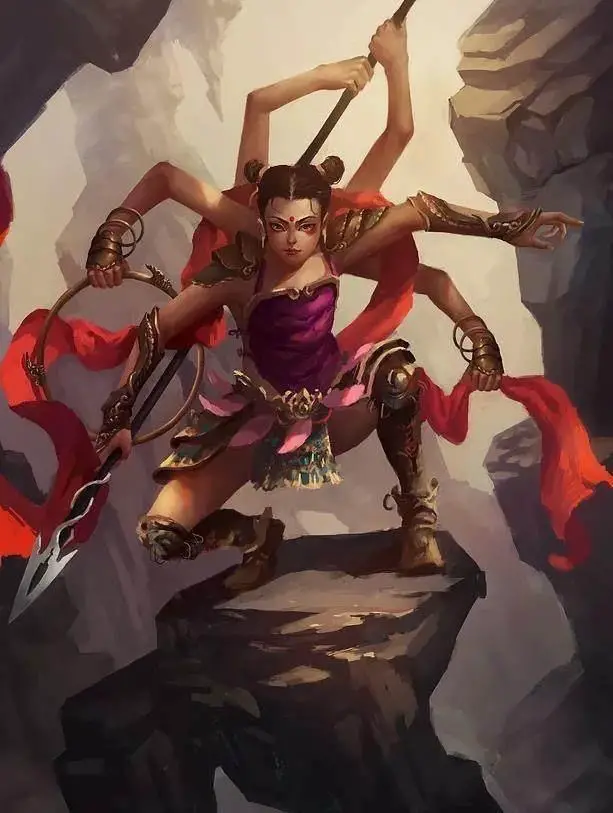
One of the most well-known stories from Chinese mythology is that of Nezha and the Dragon King. Nezha, a little kid endowed at birth with special skills, utilized them to defend his loved ones. Nezha and the Dragon King were at odds after Nezha accidently killed the Dragon King’s third son.
The Dragon King blamed Nezha for the loss of his son and set out to exact vengeance. To assault Nezha and his family, he dispatched an army of marine creatures, but Nezha was prepared to defend them at any costs. He heroically fought against the sea monsters and even managed to vanquish the second son of the Dragon King.
Even though he had won, Nezha was aware that he would need help from others to vanquish the Dragon King. In exchange for his service, the sea goddess bestowed upon him the Fire-Tipped Spear, a potent magical weapon. Nezha wielded the spear to vanquish the Dragon King and establish calm over the country.
It is common practice in China to tell children the story of Nezha and the Dragon King to instill in them the values of bravery, courage, and doing what is right. Forgiveness and constructive dispute resolution are also stressed throughout the narrative.
sun wukong vs dragon king

One of the most well-known stories from Chinese mythology is about Sun Wukong stealing the golden cudgel from the Dragon King, demonstrating the monkey king’s intelligence and power.
The Dragon King’s Golden Cudgel was a mighty weapon that could take on any form, according to the legend. Famous for his antics, Sun Wukong traveled to the undersea domain of the Dragon King in order to steal the Golden Cudgel.
As soon as he entered the palace grounds, Sun Wukong challenged the Dragon King to a fight. Because the Dragon King was confident in his ability to vanquish the Monkey King, he agreed. Sun Wukong, though, had tremendous power and agility, and he easily prevailed.
Sun Wukong, victor of the competition, sought recognition from the Dragon King. Although the Dragon King presented him with many valuables, Sun Wukong was only interested in the Golden Cudgel. The Dragon King flatly refused, claiming the weapon was too dangerous for Sun Wukong to employ.
Sun Wukong, unafraid, decided to take matters into his own hands. Then, he shrank to insect size and crept into the Dragon King’s vault. Next, he utilized his ability to enlarge himself and grab the Golden Cudgel from the Dragon King’s guards.
When Sun Wukong obtained the Golden Cudgel, he was able to use it to defeat his adversaries and defend the helpless. The sword came to represent his might and morality.
temple of the dragon king
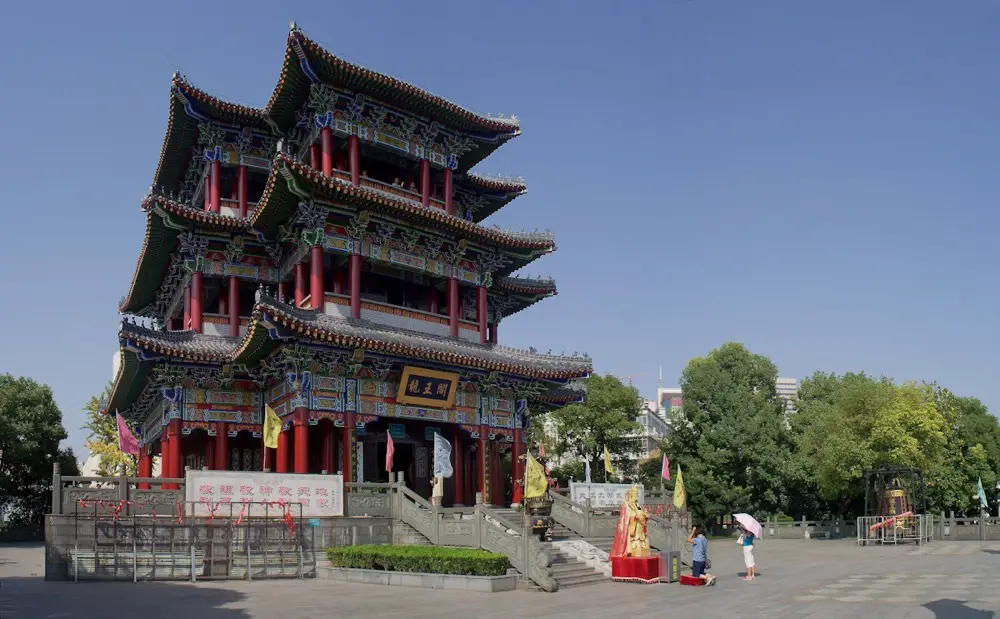
To the Chinese, the Dragon King is revered at the Temple of the Dragon King, also known as Longwang Temple. The Dragon King is worshiped there because he is considered the king of all water, hence the temple is typically situated near rivers, lakes, or oceans.
The temple is a site of worship for those who desire the Dragon King’s favor and protection, and is therefore frequently embellished with dragon sculptures and other aquatic-themed iconography. Many Chinese people put their faith in the Dragon King to safeguard them from bad luck, increase their wealth, and keep them safe from natural disasters like floods.
Dragon Boat Festival, occurring annually on the fifth day of the fifth lunar month, is another reason the temple is well-known. At this celebration, participants race brightly-colored dragon boats while listening to traditional drumming and other musical performances. In honor of the Dragon King’s dominance over the sea, a festival is held annually.
In addition to its gorgeous grounds, the Temple of the Dragon King is known for its elaborate architecture and displays of traditional Chinese art. The Dragon King can be honored and his blessings sought through the performance of ancient rites and the making of appropriate offerings.
For anyone interested in Chinese history and mythology, a visit to the Temple of the Dragon King is a must. It’s a poignant reminder of the Dragon King’s centrality to Chinese mythology and the widespread awe and respect with which he is regarded by the Chinese people.
what is the dragon king festival
Duanwu Festival
The Dragon King Festival is a major traditional event observed all over the world in places with sizable Chinese populations, including China, Hong Kong, Taiwan, and the United States. It is also known as the Double Fifth Festival and the Duanwu Festival. The celebration takes place on the fifth day of the fifth lunar month, which occurs in late May or early June.
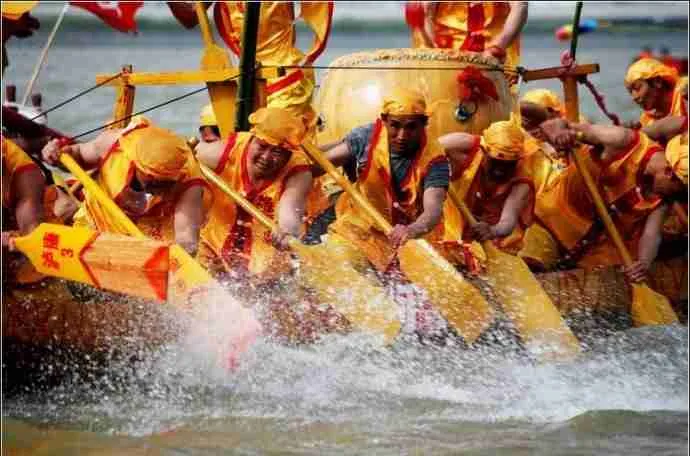
The celebration is said to have begun in ancient China as a means of protecting the populace from the dangers of the supernatural and infectious diseases that thrive in the steamy summer months. It is also an occasion to honor the legacy of Qu Yuan, a celebrated poet and politician who is held in high esteem as a symbol of Chinese nationalism.
Dragon boat races, sticky rice dumplings wrapped in bamboo leaves, and fragrant sachets are just some of the highlights of the Dragon King Festival. Dragon boat races include teams of paddlers competing in long, narrow boats adorned with dragon heads and tails. The races, which feature traditional drumming and other music, serve as a metaphor for the power and perseverance of the human spirit.
The zongzi are also a big component of the holiday since people get together with their loved ones to make and consume them. The aromatic herbs and spices inside the sachets are thought to drive away ghosts and bring prosperity.
As a whole, the Dragon King Festival is a time of great merriment and celebration, uniting people from all walks of life in a shared dedication to preserving and rejoicing in their heritage. The event celebrates the human capacity for overcoming adversity and serves as a symbol of the Chinese people’s enduring spirit.
Haixi dragon king festival
The Haixi Prefecture of China’s Qinghai Province is home to the annual Dragon King Festival, also known as the Qinghai Dragon Boat Festival.
Qianhaixi and Houhaixi residents of Jixiangtan Street celebrate the annual “Dragon King Festival” on the 13th day of the sixth lunar month. A dragon king plaque from the Ming Wanli era (1573-1619) was found on a beach after a storm on the 13th day of the sixth lunar month. Three dragon king temples were constructed in the southeast of the village and the dragon king plaque was enshrined after it was discovered by the Qianhaixi people. The people of Haixi place a high level of faith in the dragon king, believing that he can ensure their safety at sea and provide them with favorable winds and rain for their many ocean-based industries. Boatmen, salt makers, fishermen, and others would flock to the Dragon King Temple yearly on the day the plaque was discovered to pray and make wishes. This celebration, held annually in Haixi since ancient times, eventually earned the moniker “Dragon King Festival” or “Rain Festival” due to its unique nature.
Traditional “incense-running ceremony” travel dates for Qianhaixi Village are three or four days prior to the 13th day of the sixth lunar month. Over a hundred locals, including boatmen, salt makers, fishermen, and others, pooled their resources to participate in the so-called “incense-running ceremony” organized by the village chief. Stilt walkers, dry land boats, dragon flags, and a drum team marched behind a large sedan chair adorned with a mud sculpture of the dragon king. They gave performances in Lingshan, Mashan, and Pingdu, as well as in the surrounding villages, to spread awareness of and attendance at the Dragon King Festival. The vibrant and magnificent ceremony of incense running was accompanied by bright flags and booming drums.
Early in the morning of the thirteenth day of the sixth lunar month, boatmen, salt makers, fishermen, and other seafarers make their way to the temple of the dragon king to pay their respects to the sea god. People believe that if they start worshipping at a young age, they will have better luck and prosperity later on. The Taoists of Qianhaixi San Guan Temple will recite the “Autumn Rain Ode” during the Dragon King Festival in order to pray for peaceful seas and safe travel for fishermen and boat owners during the fall season. It also ensures a bountiful harvest for farmers and a salty windfall for the saltmakers come autumn.
Over 300 boats were required to transport whole pigs as sacrifices during a time of thriving sea transportation and fishing in Qianhaixi Village. Rich families each cooked their own pig, while average families cooked theirs with three to five others. Up to three hundred whole pigs were lined up in a row to accommodate the large number of worshippers. Boatmen, salt makers, fishermen, and others would follow the leader in offering three bows and nine kowtows as the first worship of the ceremony. Smoke rose from burning incense and candles as the beat of drums and the clatter of gongs echoed from the courtyard of the temple dedicated to the dragon king. Products were sold, and people were entertained by street musicians and dancers. An enormous number of people from all over Haixi came to take part in the celebrations, turning them into a spectacular and grand event. In the aftermath of the religious service, the worshippers would welcome their guests with a feast.
To sum up, the Dragon King is an important and potent figure in Chinese mythology and folklore. Some who believe in his knowledge and strength attribute him to the sea, which he is thought to rule over. Important figures in Chinese mythology include the Dragon Kings of the Four Seas and their offspring, as well as the dragon and pearl emblem. In modern China, Dragon King temples are still vital places of devotion and introspection.